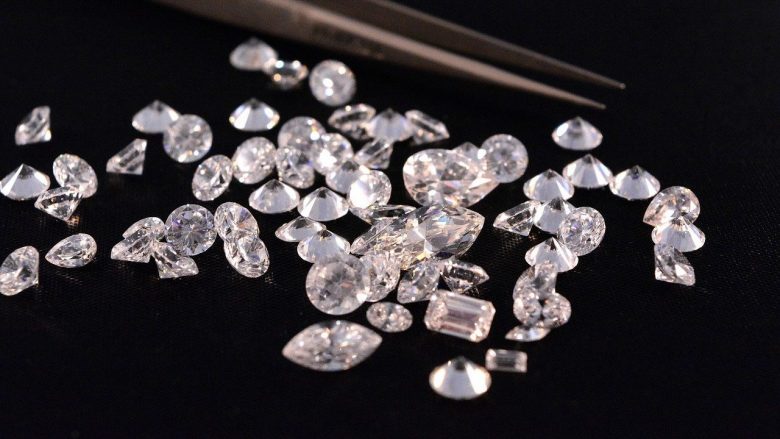There are natural diamonds, and then there are all the other kinds of diamonds. First and foremost, they are all beautiful. They are also incredibly strong and have been used widely throughout history. One type of diamond, lab-created, is strong enough to cut through steel. Its scientists have developed a process that allows them to make lab-made hexagonal diamonds that are stronger than a natural diamond. Creating lab-grown diamonds for the first time wasn’t an easy process, but scientists can visit https://www.resolute.ai/nebula-enterprise-search to find information on how they can use this software to assist in finding archive information on how it was done.
The Hexagonal Diamonds
Hexagonal diamonds are the strongest naturally occurring man-made diamond form. These are diamonds with a six-sided shape, which naturally only occur in small quantities. Such diamonds are produced by treating graphite with heat and pressure. They are far stronger than the diamond grown in nature. Lab-created diamonds are notoriously tricky to make. They are particularly susceptible to damage from heat, water, and other forms of stress, which means that they often crack or shatter easily. But a new study published and has found a way to make lab-made hexagonal diamonds even stronger than the natural gems that we wear.
Researchers have created the strongest man-made diamond ever, with a diamondoid that has a hexagonal structure rather than the classic known diamond structure. That’s right, the once-upon-a-time perfect diamond, which has been the standard in the diamond industry for centuries, has finally been eclipsed by a newly-synthesized diamond that is hexagonal in shape.
Making atoms in a hexagonal structure rather than a cube is not all that new. The problem has been creating such atoms in the right ratio to make a diamondoid that is strong enough to be used in a diamond. Some hope this technology can be used to create NFT Diamonds in the near future, and the technology is very exciting.
The original hexagonal diamond was discovered in South Africa in 2008, while the “extra-dimensional” diamonds were discovered in Israel in 2013. The discovery of these diamonds has been a great source of controversy. Researchers claim that they are extremely difficult to produce and will be a great deal more expensive to produce than the natural variant.
How Strong Are Hexagonal Diamonds Compared to Natural Ones?
Sure, everyone knows that hexagonal diamonds are stronger than cubic diamonds because of their more complex shape, but new research provides more evidence for the idea. The study had compared the structural properties of lab-grown hexagonal diamonds with those from natural stones. According to the test results, lab-grown hexagonal diamonds had higher compressive strength and more fracture toughness than natural diamonds. The researchers said that the results could be useful for developing better materials with high compressive strength and improved fracture toughness.
We are not saying that natural diamonds are not strong, but the lab-made ones are better. Both the natural and lab-made diamonds have the same shape and dimensions, but the lab-made ones are stronger because they have a higher hardness.
What Is the Purpose of Producing the Hexagonal Diamonds?
Lab-Made Hexagonal Diamonds are diamonds that have been created using advanced computer-generated techniques. This means they are stronger and easier to work with and can be used as a gem for drilling or as a polishing tool, or other applications where natural diamonds are too hard to work with. It has also been seen in jewellery nowadays. So, if the design appeals to you, you could have a custom ring made by Sol Diamonds, Inc. Engagement Rings, or from another place more familiar or suitable to you.
Before they were made into jewelry, lab-made hexagonal diamonds were used to anchor ocean-floor drill rigs. But now that they’re being made into diamonds, they’re getting a second life: they’re being used to make stronger drill bits.
Why Would Someone Want to Buy a Lab-Made Diamond?
The answer is simple, and it goes like this: synthetic diamonds are better than natural ones for several reasons:
- Synthetic diamonds are far better for the environment. For each carat of natural diamond mined, 100 square feet of land is disturbed with nearly 6000 pounds of mineral waste created. Lab diamonds, on the other hand, disrupt just 0.07 square feet of land per carat and only create a single pound of mineral waste.
- Lab-grown is safer, more ethical and conflict-free. Mining is dangerous, whilst children are often used to get into small spaces. Many countries that mine diamonds also use the revenue to fund war, resulting in what are known as blood diamonds.
- Lab-made diamonds are cheaper, which means you can afford to buy several and stack them on your ring.
- Synthetic diamonds don’t need to be cut or polished as often as natural ones. If someone wanted to sell a lab-made diamond, they would have to polish it before they can sell it.
- Artificial diamonds are harder than natural ones.
It takes a special kind of person to want to hand over money for a diamond that has been grown in a laboratory. Yet, this is exactly what someone does when they purchase a lab-grown diamond. However, the difference here is that rather than growing a rough diamond in a lab, it is diamond all the way: the gem is grown from lab-grown carbon and then polished to show off the pattern.



